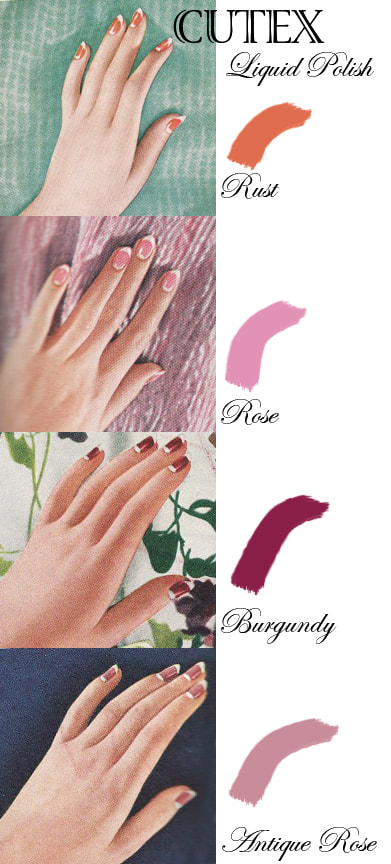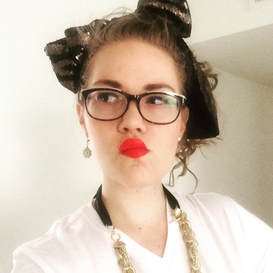1950s acrylic nails were invented by a dentist! Using his dental acrylic after breaking a nail at work, he created a pretty great fake nail. Later in the 1970's the French Manicure was created in Paris. The manicure didn't clash with the various costume changes models need to do during fashion shows.
1980s Essie nail polish becomes a household name. With fun polish names like "miss fancy pants" it is no wonder why many nail painters use this brand. From 100 layer nail polish challenges to pierced nail jewelry there are so many different ways to create a unique expression today. References: A Fascinating History of Nail Polish-Mental Floss Nail Polish Facts-Weird History of Nail Polish-Good Housekeeping The History of the Flapper Part2-Smithsonian Vintage Nail Art to Inspire Your Next Mani- Modcloth
1 Comment
As with most "Sample Pack" articles we start with the Egyptians. Although they are most well known for their "kohl" eye makeup, the Egyptians also used lip stain. (See the beet juice stain and cheek stain from the previous "Sample Pack Makeup History" article) Cleopatra was thought to use a lipstick made from carmine beetles and fish scales to create a shimmery look.
Roman men and women also tinted their lips with, you guessed it lead...when will they ever learn? In China lip color was mixed with beeswax to help with application. Lip stain was also added to small sheets of paper, dried, and applied to the lips (see here). The Chinese also added essential oils to their beeswax and lipstick paper. Solid lipstick wasn't really around until the Islamic Golden Age when a surgeon and chemist Abu al-Qasim al-Zahrawi perfected a solid lipstick formula. Thanks to him we have the solid lipsticks found on makeup shops today! (Al-Zaharwi is considered one of the Middle Age's best surgeons.) Cosmetics and makeup was considered a branch of medicine. This makes sense as the Egyptians and Chinese were also thought to use makeup for medicinal reasons. Lip color was banned by many religious groups during the European Middle Ages. It was considered a connection with the devil and reserved for the lowest class, prostitutes. In the UK during Elizabethan times, lipstick became popular for a short time. Lipstick was made of red stain and beeswax and only actors and high class women could wear it. After it's short stint in the spotlight during Elizabeth I's reign, lipstick fell out of favor. Only actors and prostitutes wore it until it gained popularity when the French perfumeries began producing it. The lipstick during this time was not in the twist or push up tube we know today. It was usually applied with a brush. Lipstick really hit its stride at the turn of the 20th century. New inventions allowed the makeup to be widely used such as the swivel tube which was patented in the 1920's. In the 1950's the first long lasting lipstick was created by American chemist Hazel Bishop. Actresses such as Marilyn Monroe and Elizabeth Taylor popularized the vivid red lipstick we associate with the 50's. After the early 1960's bright red lipstick was replaced by a variety of paler colors. The eyes were more important. Following this in the very late 1970's bright lipstick regained it's spot in makeup bags coming in more colors than just shades of red and pink. In the 1990's lining your lips with a darker shade than your lipstick became a fad and could be seen on celebrities like Madonna. As we have learned with most makeup we have covered so far, lipstick has been made out of some deadly ingredients. There's lead again, but this time it's not just back in the Roman era. As late as 2009 the FDA found traces of lead in nearly every sample of lipstick that it tested! This is extra alarming as it has been estimated that those of us who wear lipstick regularly accidentally eat about 4 pounds of the stuff in our lifetime! Be a safe shopper and do your own research on your favorite brands. References:
|
Topics
All
Archives
July 2021
|


